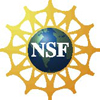
The program emphasizes engineering principles underlying the environmental health and safety impacts of nanotechnology. Innovative methods related to production processes, waste reduction, recycling, and industrial ecology of nanotechnology are of interest.
Current areas of support include:
- Understanding and mitigating the effects of nanotechnology and biotechnology on the environment
- Nanotechnology environmental health and safety impacts and applications
- Predictive methodology for the interaction of nanoparticles with the environment and with the human body, including predictive approaches for toxicity
- Fate and transport of natural, engineered, and incidental (by-product) nanoparticles
- Risk assessment and management of the effect of nanomaterials in the environment
Current areas of support for this program do not include biomedical and nanotoxicology topics involving clinical trials.
All proposed research should be driven by engineering principles, and presented in an environmental health and safety or environmental sensor context. Proposals should include involvement of at least one engineering student.
The full program description is available on the NSF Web site.
